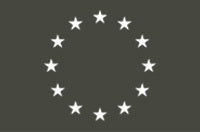Have you been wearing your baby, but are not quite sure if they sit ‘right’? Read on to learn more about common mistakes when babywearing and how to prevent them.
‘C’ Shape Spine

The baby needs to sit with their spine in a naturally formed C-shape.
What can you do wrong?
-
Baby is hugged in too close to caretaker. This can restrict the airways, increase the chance of baby overheating and hold’s baby’s spine in an unnatural curve.
How do you correct it?
Allow the baby’s spine to relax and form the optimal C-shape by loosening the straps at the sides of the baby.
-
Baby is not held close enough to caretaker. There is a risk that baby could slump down in the carrier, restricting baby’s airway.
How do you correct this?
Bring their spine in the optimal C-shape by thightening the straps to the side of the baby, so they are cuddled in to the caretakers body.
This should also make baby’s head “close enough to kiss” on the forehead, one of the T.I.C.K.S. safety rules of babywearing.
M-shape position
Baby’s legs are positioned, so the knees are above the hips creating the optimal ‘M’ shape seating.
What can you do wrong?
-
Baby’s legs are hanging, knees are positioned lower than the hips.
How do you correct it?
Does the carrier suit your baby’s size? Ensure that the seat of the carrier is adjusted to suit your baby’s size and carrying position.
Learn more about it in the carrier’s instructions. You can find instructions for all our baby carriers here.
-
Baby’s legs are splayed, as the fabric of the carrier is preventing his knees from bending.
How do you correct it?
Make sure that the seat of the carrier is adjusted to your baby’s size and carrying position. Read your carrier instructions to learn more about it.

